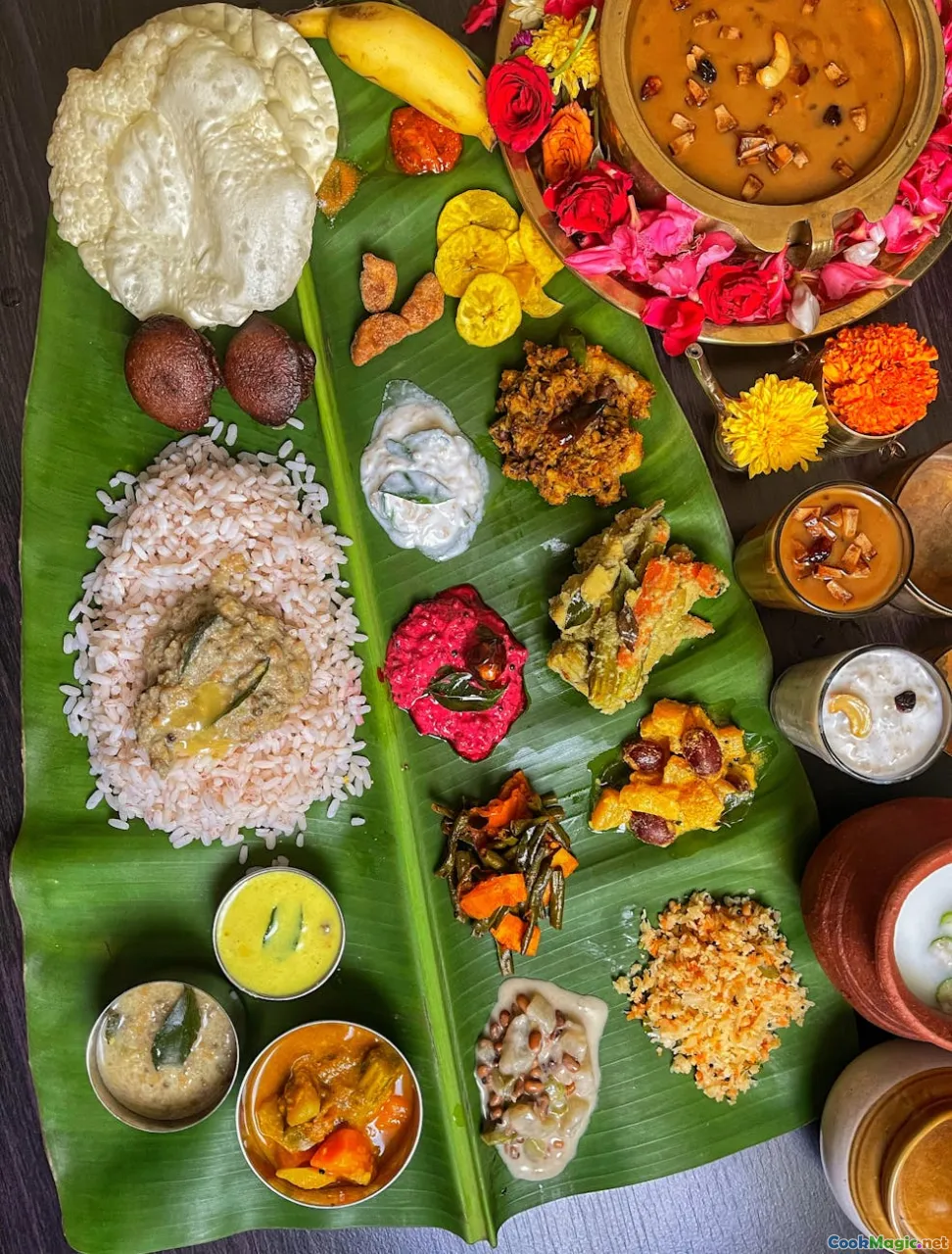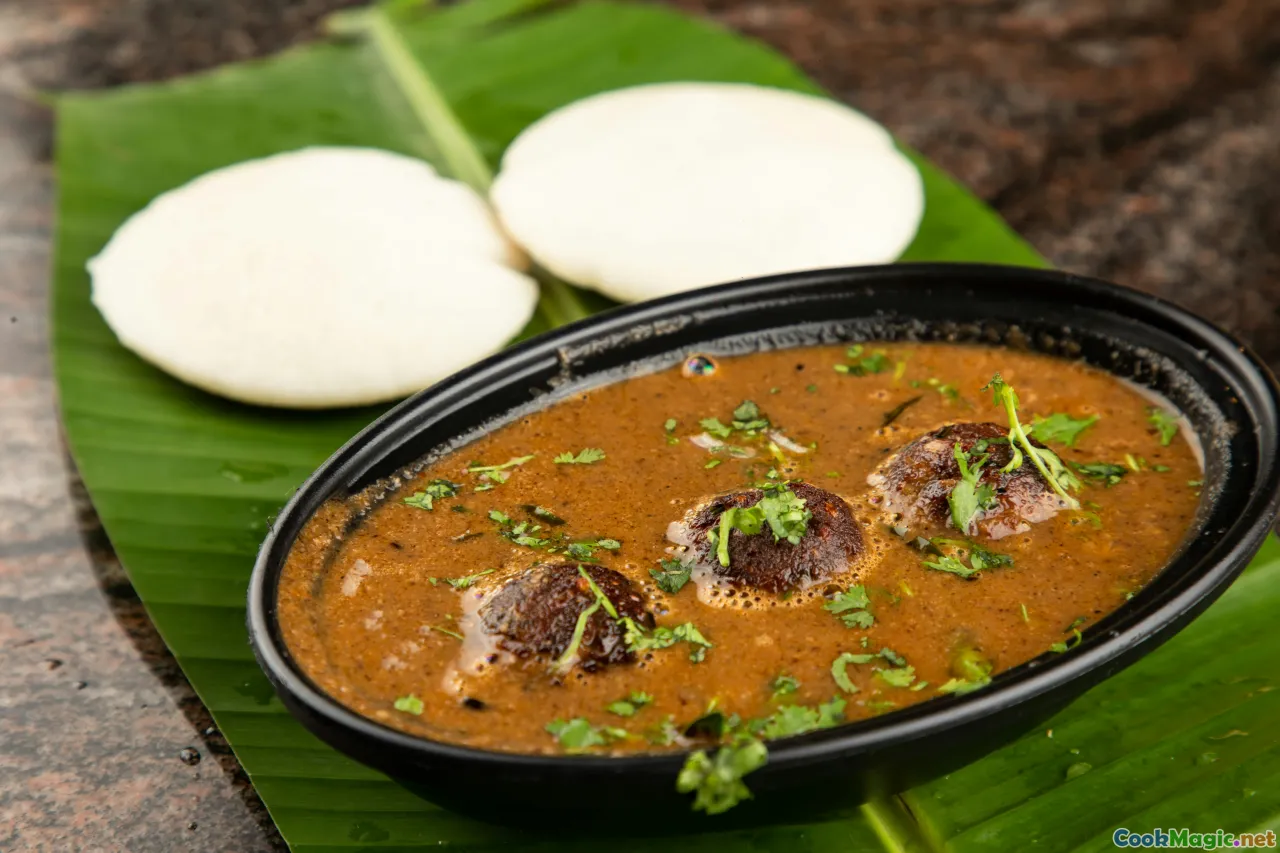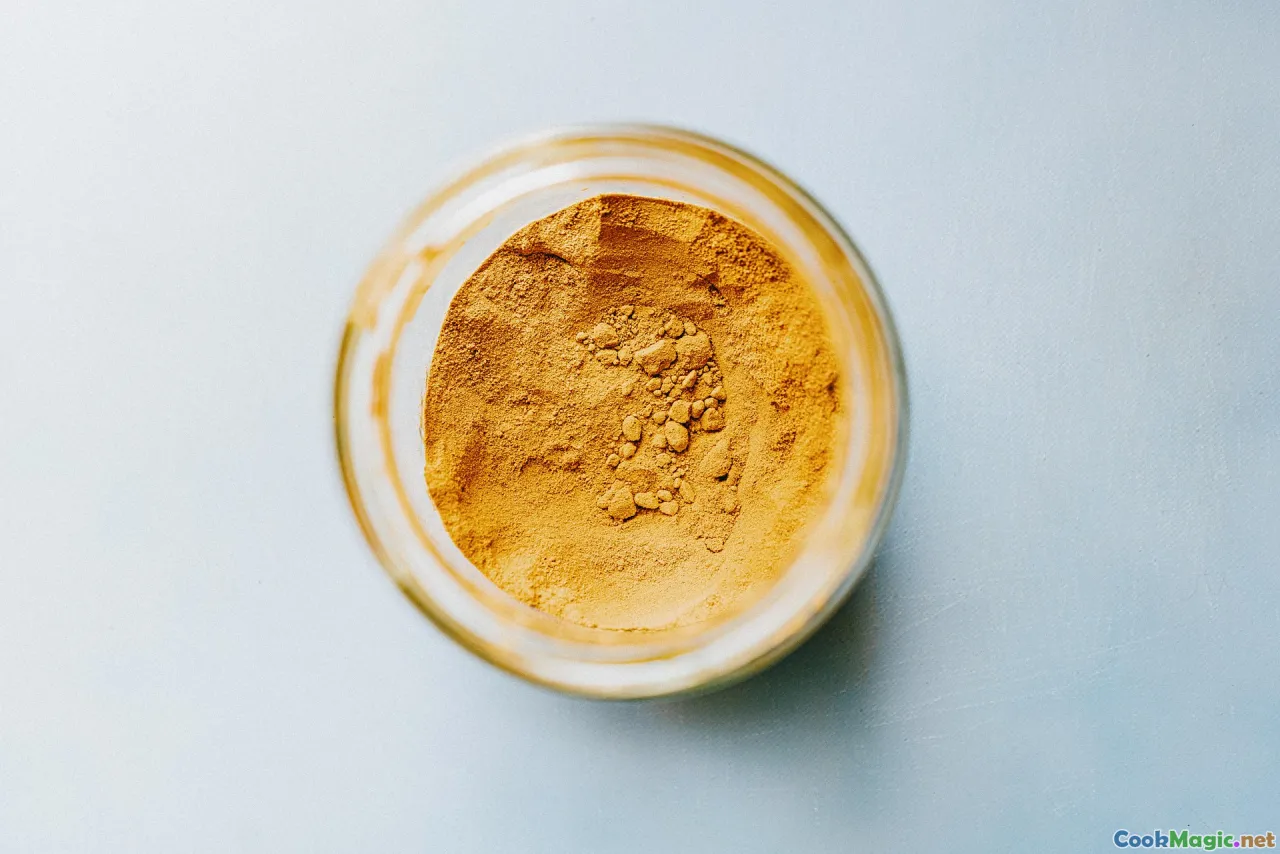
纳加帕蒂南帕查伊莫柴:泰米尔风味豆子咖喱
(Nagapattinam Pachai Mochai Kootu: Tamil Style Bean Curry)
(0 评论)食材
-
250 grams 新鲜田野豆(pachai mochai)
(使用新鲜或冷冻的豆子;干豆应浸泡一整夜。)
-
50 grams 椰子碎
(新鲜的食材更受青睐,以获得正宗风味。)
-
2 tbsp Chana dal(碎孟加拉豆)
(提供厚度和质感。)
-
1 tsp 孜然种子
-
2 pieces 新鲜青辣椒
(根据您的辣度偏好进行调整。)
-
0.5 tsp 姜黄粉
-
1 medium 洋葱
(切得很细。)
-
1 medium 西红柿
(大致切碎)
-
1 tsp 盐
(根据个人口味调整。)
-
500 ml 水
(用于烹饪豆类和 kootu。)
-
2 tbsp 油(优先使用椰子油或葵花籽油)
-
1 tsp 芥菜种子
(用于爆香。)
-
1 tsp 乌拉尔豆(黑扁豆碎)
(用于爆香。)
-
1 piece 干红辣椒
(碎块,用于调温。)
-
1 sprig 咖喱叶
(新鲜,用于调温。)
-
0.25 tsp 胡芦巴(Hing)
(一撮;提升风味。)
-
2 tbsp 新鲜香菜叶
(细切;用于装饰。)
(使用新鲜或冷冻的豆子;干豆应浸泡一整夜。)
(新鲜的食材更受青睐,以获得正宗风味。)
(提供厚度和质感。)
(根据您的辣度偏好进行调整。)
(切得很细。)
(大致切碎)
(根据个人口味调整。)
(用于烹饪豆类和 kootu。)
(用于爆香。)
(用于爆香。)
(碎块,用于调温。)
(新鲜,用于调温。)
(一撮;提升风味。)
(细切;用于装饰。)
营养
- 份量: 4
- 每份大小: 1 碗 (250克)
- Calories: 195 kcal
- Carbohydrates: 27 g
- Protein: 9 g
- Fat: 7 g
- Fiber: 8 g
- Sugar: 6 g
- Sodium: 650 mg
- Cholesterol: 0 mg
- Calcium: 65 mg
- Iron: 3 mg
制作步骤
-
1 - 豆类预处理:
冲洗绿豆;如果使用干豆,请将它们浸泡一夜,然后煮至刚刚变软。沥干备用。
-
2 - 椰子马萨拉酱的制作:
用少量水将椰蓉、鹰嘴豆小扁豆、青辣椒和孜然籽研磨成光滑的糊状物。
-
3 - 蔬菜煸炒:
在平底锅中加热1汤匙油。加入切碎的洋葱,翻炒至透明。然后加入番茄和姜黄,煮至软。
-
4 - 小火慢炖 Kootu:
加入熟豆、椰子马萨拉酱、盐和约400毫升水。搅拌后揭盖小火炖10-12分钟,直到浓稠。
-
5 - 煸炒香料:
在一个小煎锅中加热剩余的油。加入芥末籽;当它们嘶嘶作响时,加入 urad dal、红辣椒、咖喱叶和阿魏。快速翻炒。
-
6 - 最后的修饰:
将香料油淋在正在慢炖的 kootu 上。充分搅拌,煮约 2 分钟,如使用则用新鲜香菜叶装饰。
-
7 - 上菜:
请热腾腾地搭配蒸米饭或薄饼 roti,并配腌菜或炸 papad。
冲洗绿豆;如果使用干豆,请将它们浸泡一夜,然后煮至刚刚变软。沥干备用。
用少量水将椰蓉、鹰嘴豆小扁豆、青辣椒和孜然籽研磨成光滑的糊状物。
在平底锅中加热1汤匙油。加入切碎的洋葱,翻炒至透明。然后加入番茄和姜黄,煮至软。
加入熟豆、椰子马萨拉酱、盐和约400毫升水。搅拌后揭盖小火炖10-12分钟,直到浓稠。
在一个小煎锅中加热剩余的油。加入芥末籽;当它们嘶嘶作响时,加入 urad dal、红辣椒、咖喱叶和阿魏。快速翻炒。
将香料油淋在正在慢炖的 kootu 上。充分搅拌,煮约 2 分钟,如使用则用新鲜香菜叶装饰。
请热腾腾地搭配蒸米饭或薄饼 roti,并配腌菜或炸 papad。
关于 纳加帕蒂南帕查伊莫柴:泰米尔风味豆子咖喱 :的更多信息
Nagapattinam Pachai Mochai Kootu: A South Indian Bean Classic
A Taste of Tamil Nadu's Coastal Flavor
Nagapattinam is one of Tamil Nadu's most picturesque coastal districts, famous for its vibrant lagoons, bustling fishing villages, and above all, for its soul-warming cuisine. Among the reds and yellows of its diverse curries, 'kootu'—a thick, subtly spiced legume and vegetable stew—holds a place of honor at every table. The version crafted here, Nagapattinam Pachai Mochai Kootu, features 'pachai mochai', or fresh field beans, slowly simmered in a coconut-chili-grain base for an authentically coastal, plant-forward experience.
Growing Up With Kootu
In Tamil homes, kootu is about nostalgia—a dish mothers whip up with whatever legumes and local produce is at hand. Pachai mochai, a winter season bean in the fertile Delta, is celebrated each year, featuring in feasts and weekend lunches throughout Nagapattinam. This kootu is meant for sharing, spread over rice with crunchy papad and sharp mango achaar. Each bowl marks not just nourishment but community.
Regional Touches and Unique Qualities
What sets this recipe apart from other kootus is Nagapattinam's proximity to the Bay of Bengal. Here, coconut finds its rightful place both in masala base and tempering. Field beans (mochai) bestow the dish with substance and a mild earthiness; grinding them with fresh coconut, chana dal, tropical chilies and cumin builds a sweet-spicy, deeply creamy backbone. The finishing temper of mustard seeds, urad dal, curry leaves, and a hint of asafoetida hints at the coast’s love of aromatics and brings the entire house to the table in anticipation.
Unlike many rich lentil curries from northern India, kootu is refreshingly light in oil but full in flavor, and easy to veganize. Vital and everyday, a good kootu lies at the heart of 'thali' lunch, perfectly completing 'sambar, poriyal, rasam, and rice'.
Tips for the Perfect Mochai Kootu
- Bean Selection: If you can access fresh green mochai, use them! When unavailable, frozen podded mochai or even dried ones (presoaked overnight) are acceptable alternatives.
- Coconut Paste: Use freshly grated coconut for that sweet creaminess; desiccated can be substituted in off-seasons but pulses of hot water in the blender are essential for richness.
- Spice Balance: Adjust green and dried red chilies to heat preference. Omit for a children’s version or dial up for festive intensity.
- Texture: Don’t excessively mash the beans—soft but whole beans create the best kootu mouthfeel.
- Serving Suggestion: Classic comfort demands hot steamed rice, crunchy appalam (papadum), or fluffy idli/dosa for dinner leftovers. Kootu also pairs well as part of a multi-course Indian thali meal.
Nutritional Insight
Field beans are highly scoring on plant-based protein and fiber, coconut delivers natural fats (free from cholesterol), and the moderate use of oil keeps overall calories friendly even as flavor excels. In Indian cuisine, such dishes form the foundation of sustainable, daily eating.
Stories and Cultural Context
In Nagapattinam, community ties are woven tight. Festival feasts almost always include kootu, as it's filling and adaptive to whatever crops are in literally every local garden during the bean season. It is just as likely to star in a child’s school lunchbox as at a countryside temple annadhanam (community meal). Grandmothers here use family-guarded spice and coconut blends, sometimes adding tiny cubes of aubergine or pumpkin to spread the bounty.
Personal Reflection
What I love about this dish is nearly everything: from its clear ingredient list to its comfort-any-season warmth on the palate. It exemplifies Tamil cooking values—simplicity, seasonality, and extract-the-maximum-from-the-minimum creativity. It’s tasty nourishment embracing mindful spices, gentle on the gut, and gloriously compatible with India’s monsoon climate. The aroma of tempering drifted across courtyards is happiness in itself.
Enjoy your bowl of Nagapattinam Pachai Mochai Kootu—an edible diary of Tamil Nadu’s rural generosity.
























